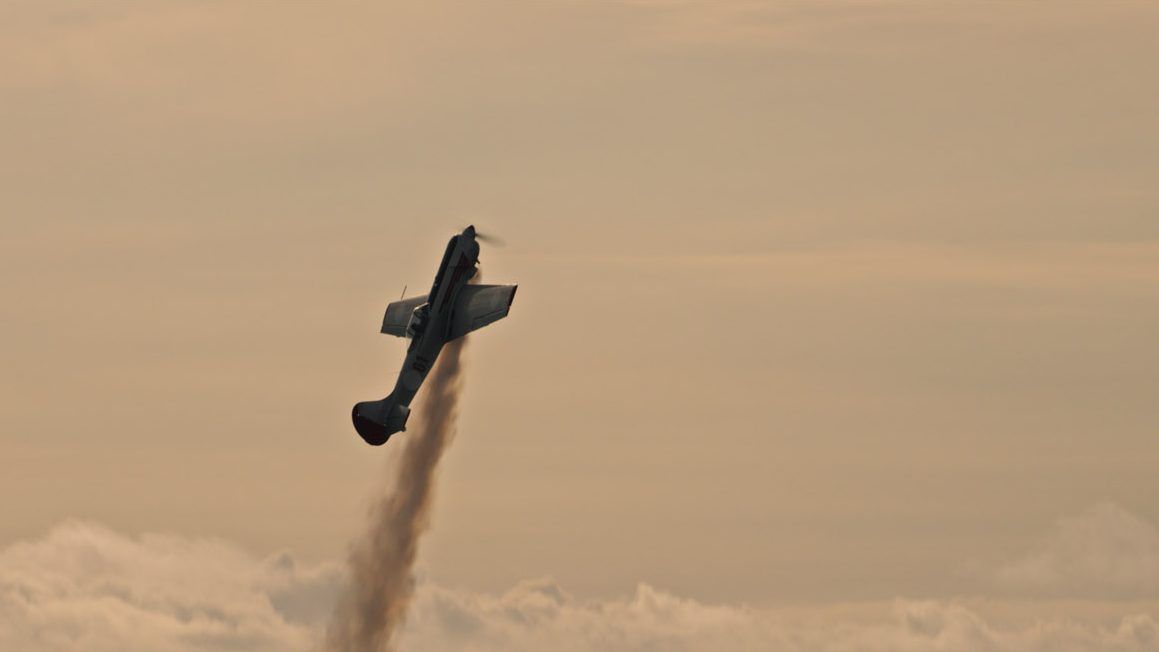TAKE OFF FOR THE SONY BURANO
23rd November 2023
SONY, BURANO, JAMES FRIEND ASC BSC,
Article Courtesy of BSC Magazine
Introducing the newest Sony Cinema Line camera, the BURANO, with a high-flying short film that premieres at Camerimage: The Wingman, shot by James Friend ASC BSC.
James Friend ASC BSC eyes an F-type Jaguar through a circular polarising filter, checking the reflections in its immaculate bodywork. A Sony BURANO sits high on a Scorpio 45’ crane, a second nestling below on a Chapman dolly. The A-cam will boom down and swing around as the gleaming Jag pulls up outside a hangar at White Waltham Airfield, Berkshire, the B-cam capturing a classic long-lens approach shot on its Cooke Varotal FF 85-215mm. The weather is unseasonably beautiful for October, backlighting the car perfectly as Friend and his crew near the end of their third and final day shooting The Wingman.
“It’s gone very well – a lot better than I’d hoped, because it was a very ambitious project for the time and money that we had,” Friend reflects later, as the crew pack down and champagne is poured. “There were a lot of elements in every scene that we weren’t sure were achievable.”
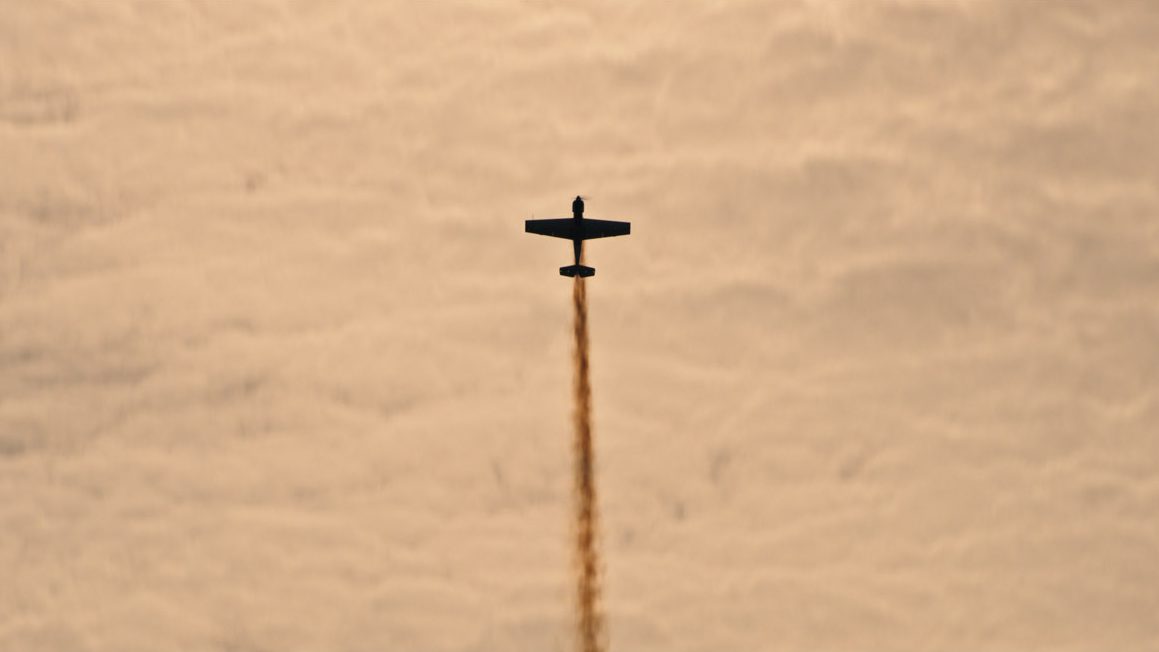
The plane was flown by Red Bull stunt pilot Paul Bonhomme
Expected to run at just a few minutes in length, The Wingman follows a pilot arriving at an airfield and taking his vintage aircraft for a spin. Tipping the hat to one of the VENICE’s most high-profile productions, Top Gun: Maverick, The Wingman is a showcase for the newest camera in Sony’s Cinema Line, the BURANO. The film is also a nod to Claudio Miranda ASC ACC – who shot Top Gun: Maverick – and is one of Friend’s heroes who he considers “one of the finest cinematographers working today”.
“The Wingman is a film that Sony is going to screen at Camerimage, so I was very conscious it’s going to go on the big screen,” says Friend. “That’s quite exciting!”
Friend makes no claim to be a director, though he is effectively helming The Wingman in addition to DPing. A BSC member since 2014 and ASC member since 2019, Friend’s credits include Patrick Melrose and the upcoming Star Wars series The Acolyte, while his work with the Sony VENICE includes Your Honor for Showtime and night work in All Quiet on the Western Front for Netflix (the latter earning him an Oscar, a Bafta and a BSC Award).
The new Sony BURANO features an 8.6K full-frame sensor, the same colour science as the VENICE, and a compact form factor. It will hit the market in spring 2024, but Friend and his crew have a trio of prototypes. “We’ve had three BURANOs which we have rigged into and onto aeroplanes,” he explains, “and we’ve shot out of a helicopter with Marzano Films – John Marzano was my aerial operator. That was excellent, going up in the chopper with him and discovering shots in the sky. We also attached the BURANO to a car rig and on a Ukraine arm.”
First AC Tom Dunne notes that the car shots employed the BURANO’s in-body image stabilisation. “That’s a key feature,” he points out, “the electromagnetically suspended sensor.” The BURANO is the first PL-mount camera to include this feature as well as the first to combine it with electronic ND filters.
Friend continues, “It was important to me, when you test a camera, not only to test the image quality but also how you can utilise it. What are its strengths and what are its weaknesses? I treated it as more like a simulation process than an actual movie. It was an experiment really. And I’m delighted with it. It’s a fantastic camera: it’s lightweight; the image stabilisation in it is absolutely breathtaking; the variable ND, for me, was a brilliant tool.”
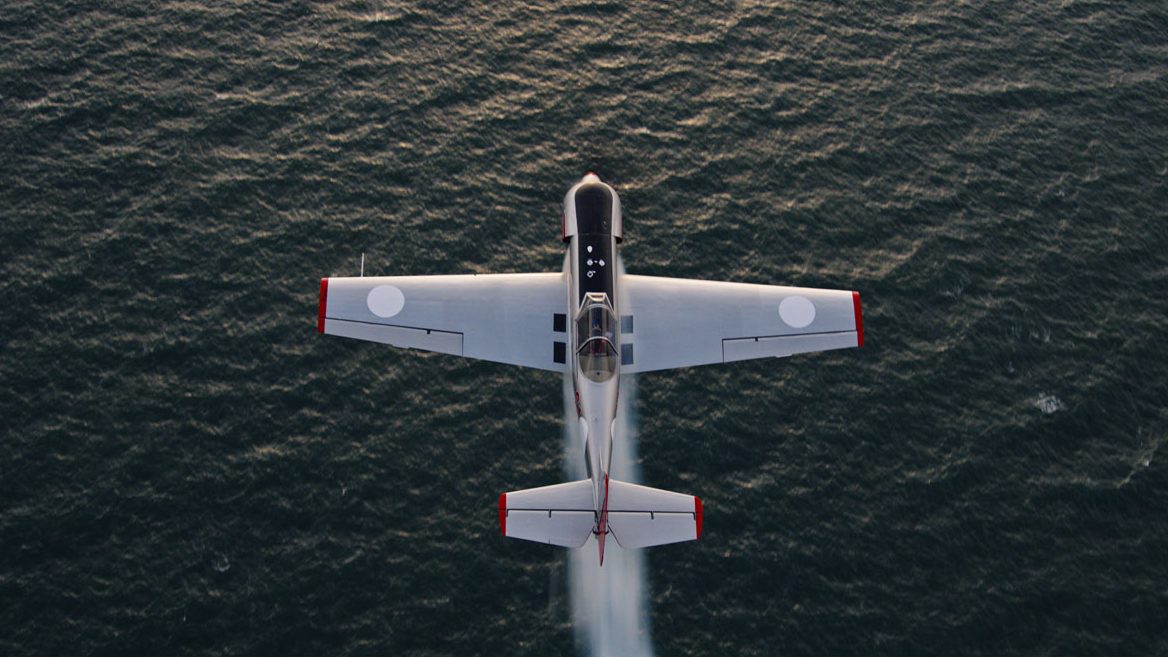
“We’ve had Livegrade on set and we pushed it and pulled it and it looks fantastic,” says James Friend ASC BSC on colour science in the Sony family
Right tool for the job
The Wingman is supported by Sunbelt Rentals and Cooke Optics amongst others. As well as the S8/i and Classic Panchro glass, the crew is equipped with a set of Cooke’s new E-mount SP3 lenses. These combined with the BURANO “made the whole profile of the camera extremely manageable in confined situations,” according to Friend. Fujifilm have also played a part, providing their Fujinon 25-1000mm zoom for certain shots.
“These camera systems at the moment, they’ve become more like film stocks,” says Friend. “You want to have the right tool for the right job. I wanted to shoot it side-by-side with the VENICE 2 and also utilise the VENICE 2 in its Rialto mode in places where we couldn’t get the BURANO. We were attaching the camera to an aeroplane and every gram was being measured.”
The plane is a Yak-50, a model produced in the 1970s-80s by the Moscow-based manufacturer Yakovlev, and used by the Soviet National Aerobatic team. Friend says, “We’ve had a fantastic pilot, a chap called Paul Bonhomme, who is a Red Bull stunt pilot. His skills are just phenomenal. The man’s almost superhuman.”
Bonhomme is a British Airways captain who started his aviation career at White Waltham, the same airfield where he is now shooting The Wingman. His previous film credits include piloting a Messerschmitt in The Land Girls, and he retired from the Red Bull Air Race in 2015 as the most successful pilot in the sport after a record-breaking third world championship win.
Before coming to White Waltham, the production spent two days at Henstridge Airfield, Somerset to capture the airborne material, including Bonhomme performing a loop-the-loop. Naturally, safety and handling of the Yak-50 were of prime concern when rigging cameras to it.
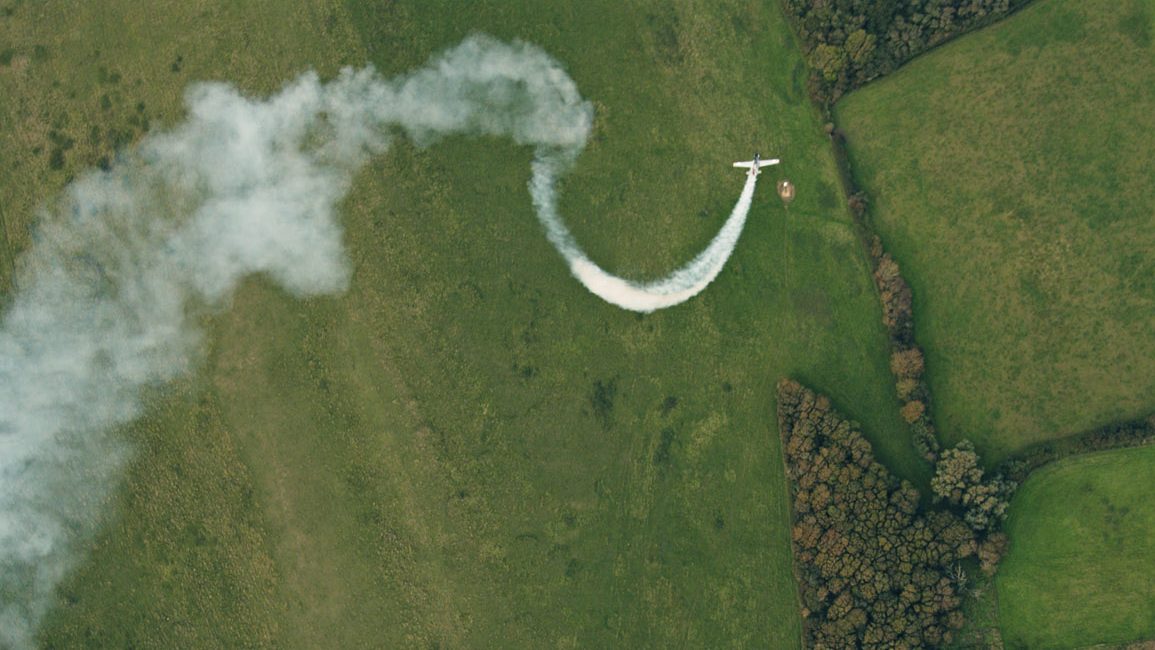
The airborne material was captured in Somerset
“We had a prep day with the technicians where we said, ‘This is where we want to put the camera; this is the camera we want to use,’” relates Dunne. “Then they weighed everything up and did calculations on aerodynamics… For all the positions on the plane it kind of had to be [VENICE] Rialto just because of its size, because you can put the body inside the fuselage and then you get a little more leeway to be able to put [the sensor block] where you want it.”
Like the VENICE, the BURANO provides 16-bit colour depth. Friend and his crew are recording in the new camera’s 8.6K mode in X-OCN LT. “It’s going to grade absolutely beautifully,” says the DP. “The colour science in the Sony Cinema Line family has always been breathtaking. We’ve had Livegrade on set and we pushed it and pulled it and it looks fantastic.”
The cinematographer explains how correct exposure for the aerial shots initially concerned him. “When we set the plane off, I had no way of monitoring the footage live. I had to set the stop by eye or by my meter on the runway, then it would take off and fly for up to half an hour at a time and then land, so obviously the light condition changes dramatically when you go up in the air and throughout the duration of that flight. That was something that was really concerning me. [The plane] would come back and I’d be nerve-rackingly trying to get [the footage] back to the DIT and then we would check the worst cases – and all the information’s there. When a cloud came in or when the sun came out, we never lost information in the highlights or the shadows. It’s remarkable really. It’s actually quite hard to destroy the image!”
Regardless of the BURANO’s dynamic range, achieving the desired contrast ratio in a given shot will always be an art. “Do we have any cloud cover coming up?” Friend asks his gaffer, deciding to drop a stop or two of ND as the camera frames a close-up of Bonhomme standing in the doorway of the hangar, the open sky behind him. Sparks shuffle black solids in tight to the edges of frame, controlling the ambience that spills through numerous skylights.
DIT Peter Marsden switches his monitor to the live view, contemplating the waveform for a moment. Satisfied that the sky is not clipping, he returns to playing back some aerial footage which he has already graded. The Yak is framed in a gloriously sunlit sky above a sea of clouds. “It grades like a VENICE,” Marsden attests. “I’m bringing the highlights down when we’ve got a bit of sunshine in the shot – it’s working. It’s exactly what I’d expect with the VENICE. And it’s sharp too.”
Marsden has looked at shots from the BURANO and VENICE alongside each other, and although he hasn’t conducted any technical comparison, to his eye the match is good. He points to a dynamic range chart he uses for the VENICE. “Just measuring the stops, my numbers – pretty much – were matching the VENICE, which is a really good sign.” Consequently, Marsden’s long experience of exposing the VENICE put him in good stead to expose the BURANO. “Sometimes you don’t even need a waveform monitor, you just know where you’re going to be.”
“Seeing the two systems working side by side and then going through the post-production – it’s seamless,” Friend enthuses. “I can’t tell what was shot on which camera. [The BURANO is] a fantastic addition to the Sony Cinema Line family.”
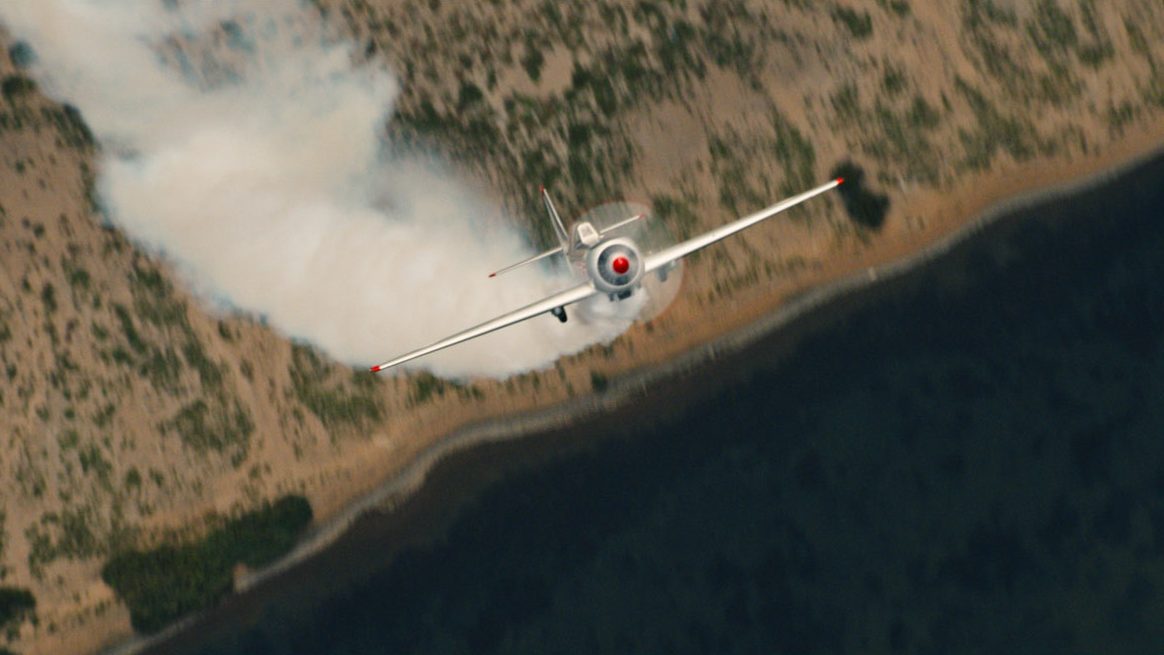
Red Bull stunt pilot Paul Bonhomme flew the plane with the VENICE in Rialto mode attached
An educational experience
The crew is working a continuous day, but an informal lunchbreak occurs as they wait for the natural light to fall for the big reveal shot of the Yak in its hangar. The lighting department put the finishing touches to a rig of 40 Astera tubes on the ceiling, along with a Creamsource Vortex, more tubes around the walls, and a diffused SkyPanel S360-C serving as a key. A pair of Triumph motorcycles are wheeled into artful positions around the plane.
“Generally, this has been educational for all parties,” observes Dunne as the sparks go about their work. “The team from Sony are here and they’ve been very good about asking us about this and that, and when we’ve had questions they’ve answered them very well… Ultimately it’s down to: what does the picture look like? Is it workable? And so far, all the problems we’ve had, [Sony responded with] ‘Yes, we know about that. It’s going to be fixed.’ Which is nice to hear, actually!”
With the daylight almost gone, ND filters are removed and a stop of T2.8 (ISO 800) is set on the BURANO A-cam’s 25mm S8/i. At the touch of a tablet the Astera tubes fire up row by row, revealing the Yak as the Scorpio pushes in towards its nose to frame a dramatic low angle. “Great! Can we do one with a shorter move?” Friend asks, and the grips oblige.
Moving on, the magic word “martini” spreads like wildfire through the crew, and the final set-up – a close-up of the fuselage – is soon in the can. The Asteras pulse a celebratory rainbow pattern, and the camera teams start wheeling the Magliners back to the trucks. The BURANO’s greatest test so far is over, but many surely lie ahead.
“It’s gone very well,” Friend concludes. “We’ve wrapped early, which I wasn’t expecting, and I’m absolutely delighted. I can’t wait to get into post-production.” Asked if he can see himself shooting on the BURANO in the future, he replies: “Of course, one hundred per cent. I shoot on Sony systems quite a lot and it’s a fantastic addition to the already brilliant Cinema Line family. So yes, I will most certainly be using it in the future.”
